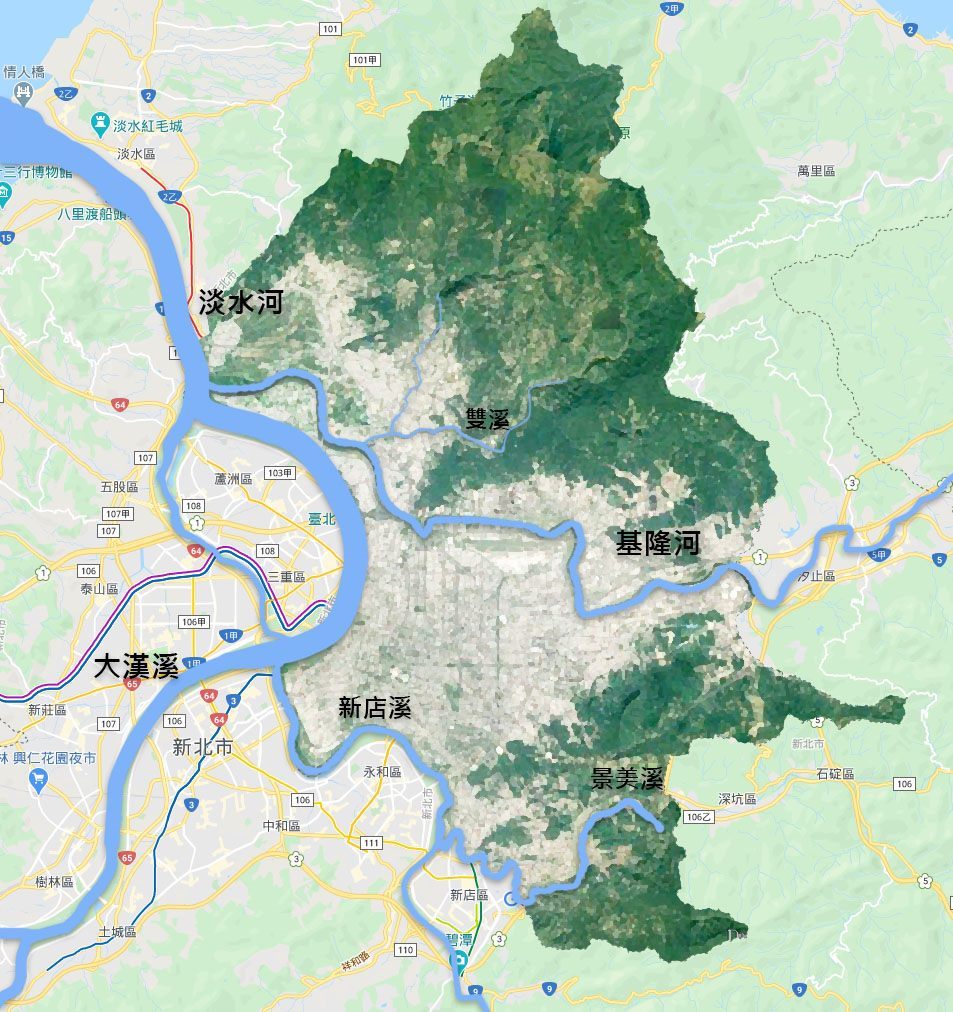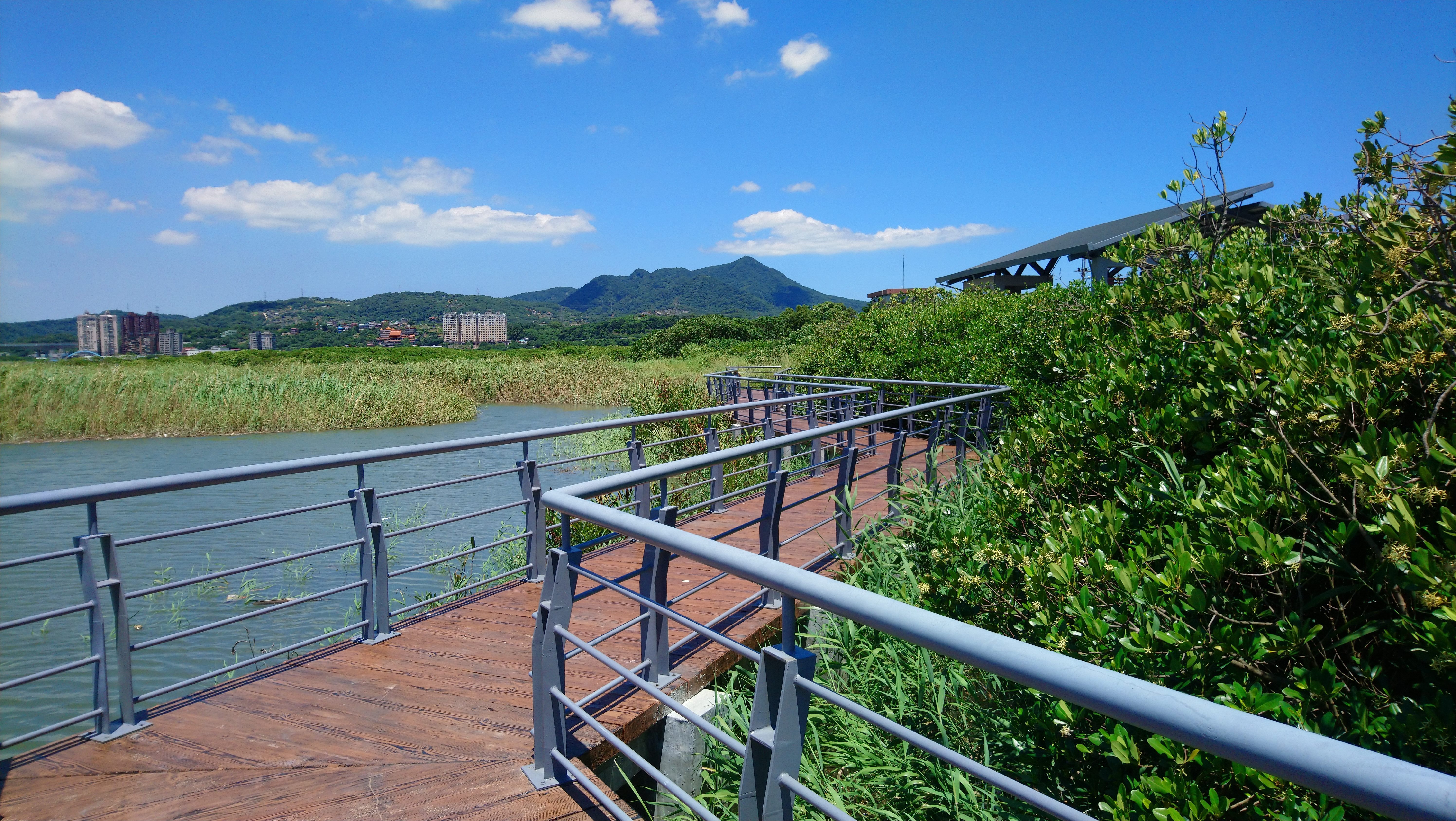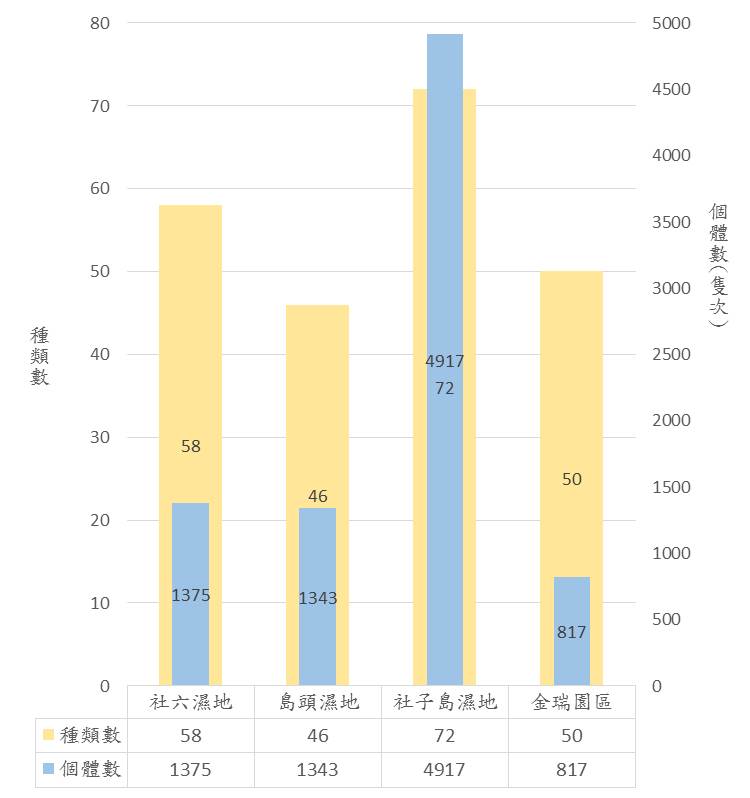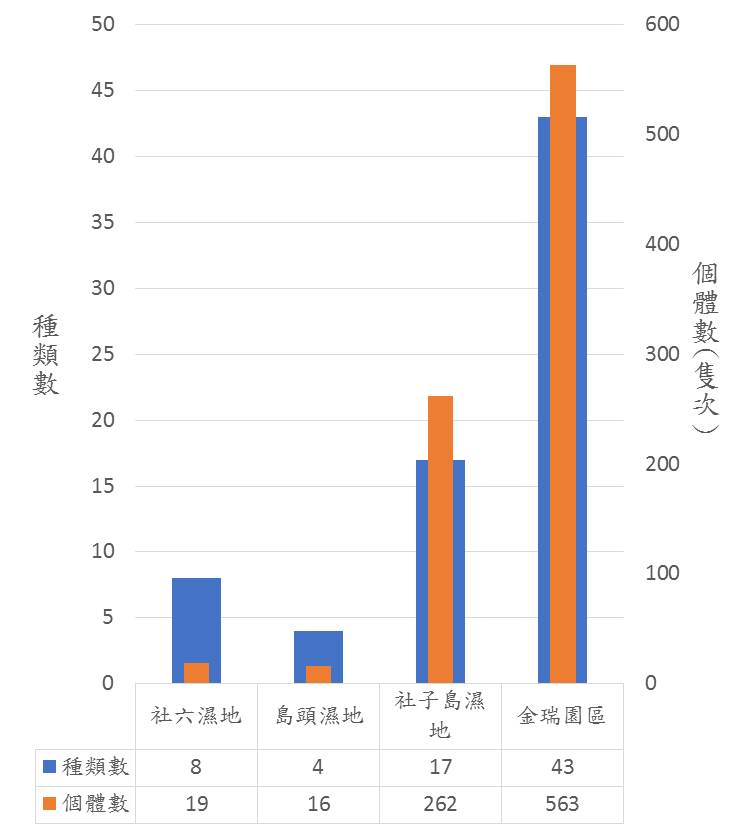The Tamsui River is the major river system in Taipei City. With a catchment area of 2,726 m2, it includes three major tributaries: the Dahan River, Xindian River, and Keelung River. The Jingmei River penetrating Wenshan District joins the Xindian River in Jingmei District and flows around the southern boundary of the administrative district in Taipei City. The Dahan River, mainly flowing across New Taipei City, meets the Xindian River around Jiangzicui and Wanhua in Taipei City and becomes part of the commonly known Tamsui River. Penetrating the northern part of the Taipei Basin from east to west, the Keelung River joins the Tamsui River at Guandu and the head of Shezidao.

The Ramsar Convention on Wetlands is an intergovernmental treaty concluded in 1971 for wetlands protection. Taiwan also implemented the Wetland Conservation Act in February 2015. With reference to the Ramsar Convention, the Act defines wetlands as “areas of natural or artificial, permanent or temporary, still or flowing, freshwater, saltwater or semi-saltwater marsh, lagoon, peat land, tidal zone, water, including areas of marine water the depth of which at lowest tide does not exceed six meters.”
As land prices in Taiwan have been soaring over the past five decades following economic growth, developers began to turn their interest to wetlands, damaging massive wetlands through development. The Executive Yuan thus approved the “Plan for Biological Diversity Promotion” in August 2001 to request the Ministry of the Interior and other ministries and commissions to implement wetlands conservation and implemented the Wetland Conservation Act in 2014. Currently there are two international-class, 40 national-class, and 41 regional wetland areas in Taiwan.
The functions of wetlands include flood control, water purification, waterfowl habitats, and fishery sources. From the ecological point of view, the productivity of wetland ecosystems is both high and comprehensive. As the major “transit station” of migratory birds, wetlands attract up to tens of thousands of migratory birds of different species every year. Except for a small number of species, over 350 species rest and forage in wetlands in Taiwan.
Wetland protection needs transnational collaboration. As migratory birds distribute in different regions and countries, transborder, multilevel collaboration should thus be enhanced. At each Conference of the Contracting Parties (COP), protection of wetlands and water sources is the common topic for mitigating the deteriorating environmental threats based on the current environmental condition.
Status description
Important wetlands (national class) in the Tamsui River Basin include the North-Jetty of Taipei Port Wetland, Wugu Wetland, Wazihwei Wetland, Danshui River Mangrove, Guandu Wetland, Dahan-Xindian Weland, Xinhai Artificial Wetland, Fuzhou Artificial Wetland, Daniaobei Artificial Wetland, Chenglin Artificial Wetland, and Lujiao River Artificial Wetland. As the characteristics of ecological wetlands cannot be divided by administrative districts, these wetlands are co-managed by Taipei City and New Taipei City.
The Guandu Nature Reserve and Waterfowl Refuge are the most famous wetland areas in Taipei City. The former was announced, planned, and built in 1986 in accordance with the Cultural Heritage Preservation Act, and the latter was planned and built in 1993 in accordance with the Act on Wildlife Conservation. Both refuges were planned and built to protect waterfowl habitats and provide migratory birds with a quality ecosystem.
HEO-Operated Artificial Wetlands
Located at the junction of the Tamsui River and the Keelung River estuary, Shezidao forms the ecologic corridor of Taipei City along the Tamsui River and the Keelung River alongside the Guandu Important Wetland and Wugu Wetland. In addition to the mission to protect waterfowl habitats, they are also the hotspots of biodiversity conservation. Currently the Hydraulic Engineering Office (HEO) has planned three artificial wetlands at the downstream on the Keelung River side of Shezi Bridge and around the confluences of the Keelung River and the Tamsui River: Shezidao Wetland, Daotou Wetland, and Sheliu Wetland. Through regular maintenance and management, waterfowl from the families including Ardeidae, Charadriidae, and Rallidae have been spotted in these areas in recent years. Additionally, the crested serpent eagle (Spilornis cheela), black-winged kite (Elanus caeruleus), brown shrike (Lanius cristatus), common kingfisher (Alcedo atthis), Chinese spot-billed duck (Anas zonorhyncha), eastern yellow wagtail (Motacilla tschutschensis), vinous-throated parrotbill (Suthora webbiana), and plain prinia (Prinia inornata) are commonly seen.
Every Saturday HEO volunteers arrange guided tours at Shezidao Wetland to explain the environmental condition of the neighborhood and exchange opinions. They also prepare drinking water and simple bicycle repair equipment there to provide visitors with an environment for onsite observation, recreation, and sharing opinions.
The Jinrui Flood Management Park and Dagouxi Waterfront Park are located in Neihu District. They are detention basins built to lessen the downstream drainage burden in rainstorms. Sitting on the junction of a slope by the brook and the flatland area, both parks are characterized by rich water and mountain resources that enrich the local ecosystems for visitors to observe low-elevation forest species. As the environment of Jinrui Flood Management Park is perfect for Odonata, over 70 species in the order have been recorded in the park. Without offending the consideration of water conservancy and flood control safety, the park has become a demonstration area for hydraulic engineering and ecological education. In fact, it is also the first theme park for dragonflies in the city.

Around the Taipei Basin, there are the Datun Mountain (Yangminshan National Park) in the north and the Xueshan Range (Chatianshan Nature Reserve) in the south. With the Tamsui River running across, the HEO riverside parks along the banks and the detention basins at the midstream form an important ecological corridor surrounded by mountains in the Taipei Basin. By combining hydraulic engineering and ecological design, HEO has completed various hydraulic parks that provide citizens with great recreational spots, animals with ideal habitats, and the city with flood control facilities. Through long-term monitoring of ecological resources, HEO uses the outcomes for environmental planning, environmental education, habitat improvement, and biodiversity preservation to achieve the goals of flood control and management and ecological protection, aiming to turn Taipei City into a sustainable ecological city.
Ecological environment overview
Wetlands under HEO jurisdiction mainly include two types: “coastal plain estuary” and “low-elevation forest”.
The wetlands around Shezidao fall in the coastal plain estuary type. Lying in the tidal stream section, the water and soil in the area contain more salt, and the environment is characterized by marsh and mangroves. Migratory waterfowl and crabs and mudskippers on the beach are the dominant species in the area.
The Jinrui Flood Management Park and Dagouxi Waterfront Park under HEO jurisdiction are surrounded by hills in a low-elevation forest freshwater environment. The neighboring low-elevation broadleaf forest is home to a wide variety of butterflies and dragonflies and various forest resident birds, including the crested serpent eagle (Spilornis cheela) and Taiwan blue magpie (Urocissa caerulea). Additionally, colonies of bats are also regularly seen in the parks.
~Spring~ (March-May)
Shezidao Wetland:
Spring is the mating season for resident birds. In the area they chirp to mate, build nests, and regurgitate their babies. Ardeidae, Rallidae, and Cisticolidae are the most representative families of birds spotted in spring. Sometimes migratory birds on their return to the north will also forage in the wetland!
Jinrui Flood Management Park:
This is the ideal place for watching dragonflies and butterflies. Gliding crested serpent eagles are sometimes spotted in the area. Opening the ears, one will also hear the song of courtship chirped by resident birds hidden in the mountain forests.
~Summer~ (June-August)
Shezidao area:
The white flowers of the Kandelia (Kandelia candel) and the glory bower (Clerodendrum inerme) are blooming, and the crabs and mudskippers are the most active in this season.
Jinrui Flood Management Park:
Different types of dragonflies are ready for emergence. In the evening, the eastern bent-wing bat (Miniopterus fuliginosus) begin its daily routine.
~Autumn~ (September-November)
Coastal Shezidao:
In the blooming season of the common reed (Phragmites australis), visitors can watch the vivipary of Kandelia (Kandelia candel) closely along the boardwalk of Shezidao Wetland. Migratory birds from yonder north are also checking in.
Jinrui Flood Management Park:
Most winter migratory birds begin to check in here from October.
~Winter~ (December-February)
Shezidao Wetland:
Waterfowl from the families of Scolopacidae, Charadriidae, and Anatidae are the most seen species in the area. Visitors are welcome to Shezidao Bird-Watching House to watch them closely.
Jinrui Flood Management Park:
The small white (Pieris rapae) is the most seen butterflies in the area in this season.




![Taiwan.gov.tw [ open a new window]](/images/egov.png)
